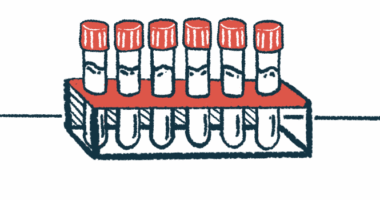Case study notes challenges to CAD diagnosis, care in Pakistan
Infrastructure, access seen as barriers to care in resource-limited areas

Researchers said a case of cold agglutinin disease (CAD) in a 92-year-old man in Pakistan illustrates the challenges of CAD diagnosis and management in developing countries.
The man’s experience highlights “the urgent need to improve healthcare infrastructure and enhance diagnostic capabilities while facilitating equitable access to essential CAD treatments in resource-limited settings like Pakistan,” the researchers wrote. Prolonged wait times for test results, limited access to newer treatments, and financial constraints are among challenges doctors in these areas face, they wrote.
The case study, “Navigating cold agglutinin-induced hemolytic anemia in developing countries: A case report and literature review, was published in SAGE Open Medical Case Reports.
CAD is a rare autoimmune disorder marked by hemolysis, or the destruction of red blood cells, triggered by self-targeting antibodies called cold agglutinins that bind to red blood cells at low temperatures. The resulting low counts of red blood cells, or anemia, impair oxygen delivery to tissues in the body, leading to weakness and fatigue. Other CAD symptoms include pain, headache, skin discoloration, and heart complications.
CAD is “a challenging condition that necessitates a thorough understanding of its clinical manifestations, diagnostic criteria, and appropriate management,” the researchers wrote, adding that there are “diagnostic and management challenges, particularly in resource-limited settings like Pakistan.”
The road to CAD diagnosis
The 92-year-old man arrived at the emergency department after experiencing a week of altered consciousness, high fever, and severe, generalized weakness. He had an enlarged prostate and had undergone right hip replacement surgery.
An examination revealed low blood pressure, a high heart rate, unusual paleness in the skin of the palms, and cold, numb, and blue-tinged fingers. There were no signs of liver, heart, or lung problems.
Lab tests revealed severe anemia, as indicated by low levels of hemoglobin, the protein that carries oxygen in red blood cells, and high levels of other markers of hemolysis. The man also had abnormal results on kidney function tests and high levels of an inflammation marker.
A blood smear examination, in which a small amount of blood is smeared on a glass slide, showed several abnormalities suggestive of CAD, including red blood cell clumps and a higher number of immature red blood cells. A heart scan showed a reduced ability to pump out blood from his heart.
Although a urine test was positive for the yeast Candida albicans, blood cultures showed no active growth. The man also tested negative for several viruses.
A Coombs test, which measures whether antibodies and other immune proteins are attached to red blood cells, came back positive, as did a test for cold agglutinins, which confirmed a CAD diagnosis.
Based on these findings, the man received a blood transfusion, antibiotic and antifungal medications, nutritional supplements, and intermittent saline injections. Measures were also taken to keep the man warm.
Issues resolve after treatment
After the interventions, the patient showed notable progress and favorable responses to transfusions. Into-the-vein administration of the steroid methylprednisolone, an immunosuppressive treatment, nearly alleviated all his symptoms.
Blood tests confirmed the resolution of anemia, with increased hemoglobin levels, and normalization of cold agglutinin levels. However, he still showed some health abnormalities, such as a whole-body infection caused by a urinary tract infection.
Discharge recommendations included nursing care, oral steroid and antibiotic treatment, vitamin supplementation, maintaining warmth, and physiotherapy. One week later, the patient was stable, and his hemoglobin levels increased further, almost approaching the normal range. A gradual tapering of oral steroids was recommended after four weeks.
Limited testing procedures, including the inability to perform specific tests because of lack of access or financial constraints, prevented doctors from establishing whether CAD was secondary to an underlying infection or blood cancer, the researchers wrote.
A lack of access to treatments such as rituximab and Enjaymo (sutimlimab-jome), the only therapy specifically approved for CAD, is another barrier marked by high costs, low supply, and regulatory hurdles, especially in older patients and those with financial constraints, they wrote.
The case emphasizes “the complexities of diagnosing and managing [CAD] in Pakistan,” the team wrote. Still, they wrote, it “exemplifies the successful application of a comprehensive treatment approach, including blood transfusions, immunosuppressive therapy, and targeted management of associated infections.”
“By enhancing awareness and understanding of this condition, clinicians can optimize patient outcomes through timely intervention and multidisciplinary care,” the researchers concluded.








